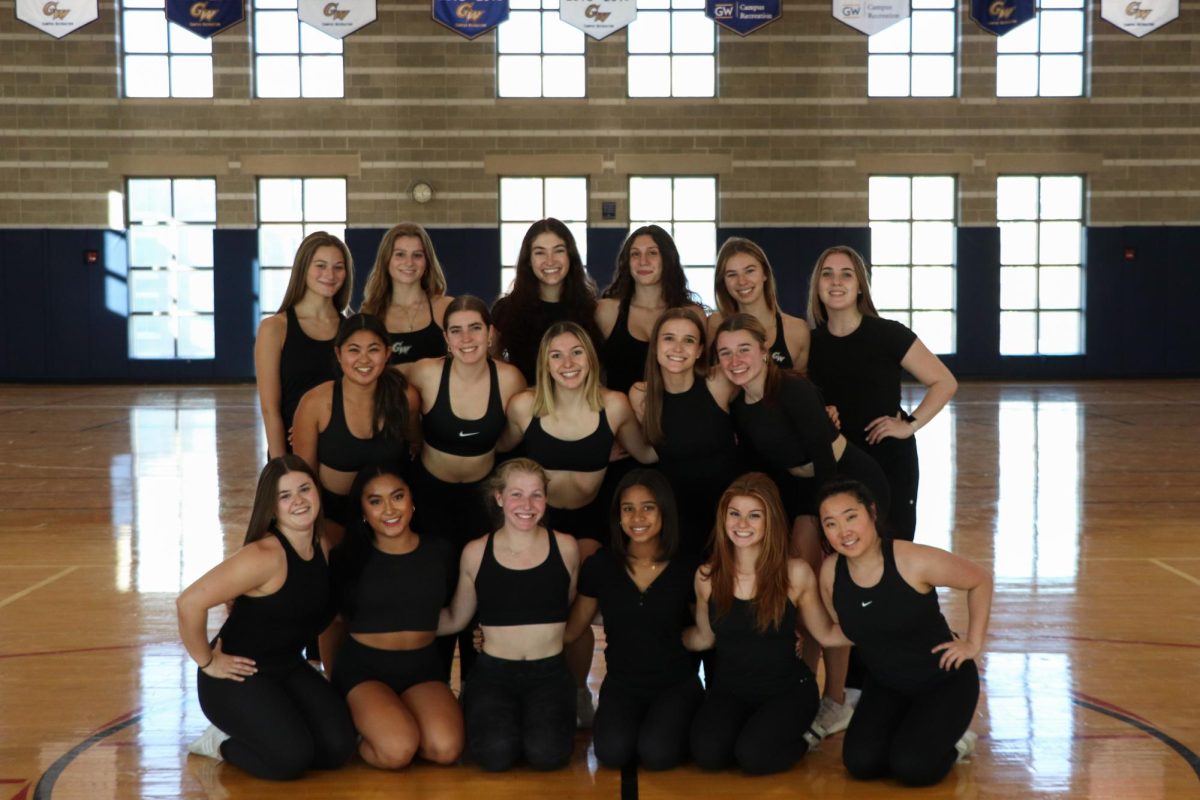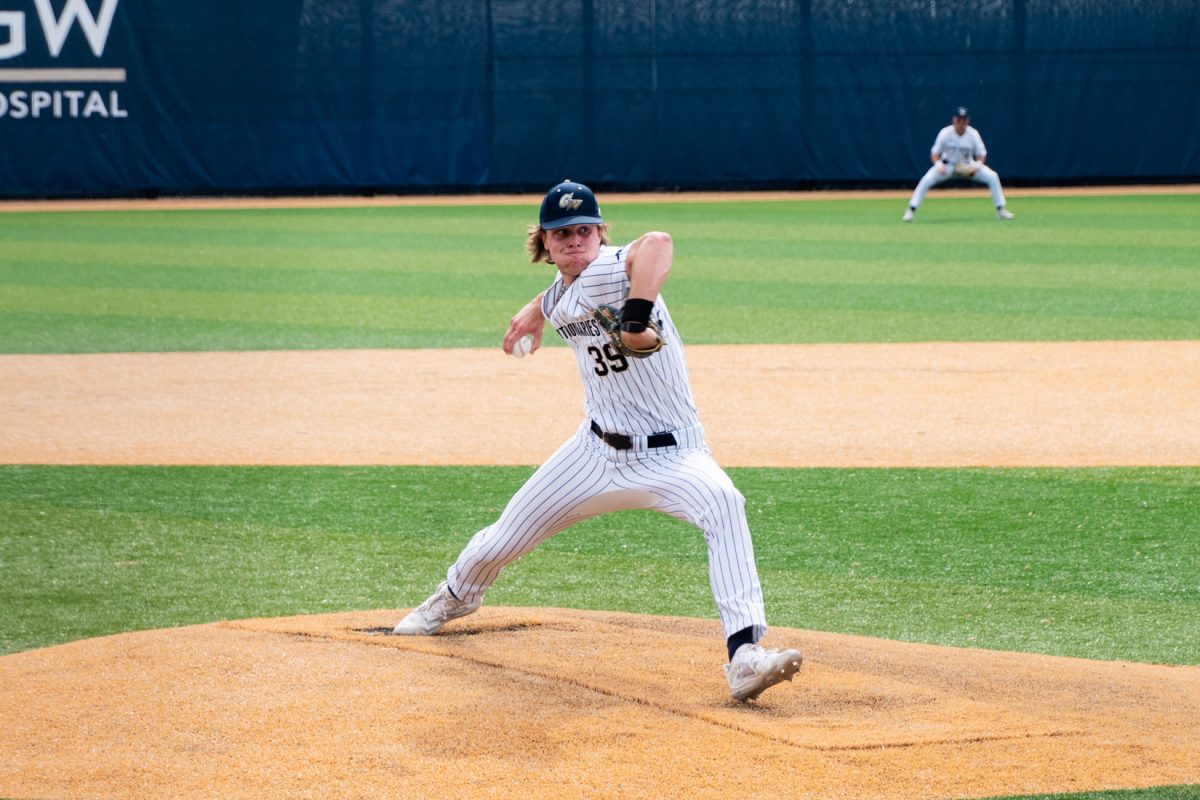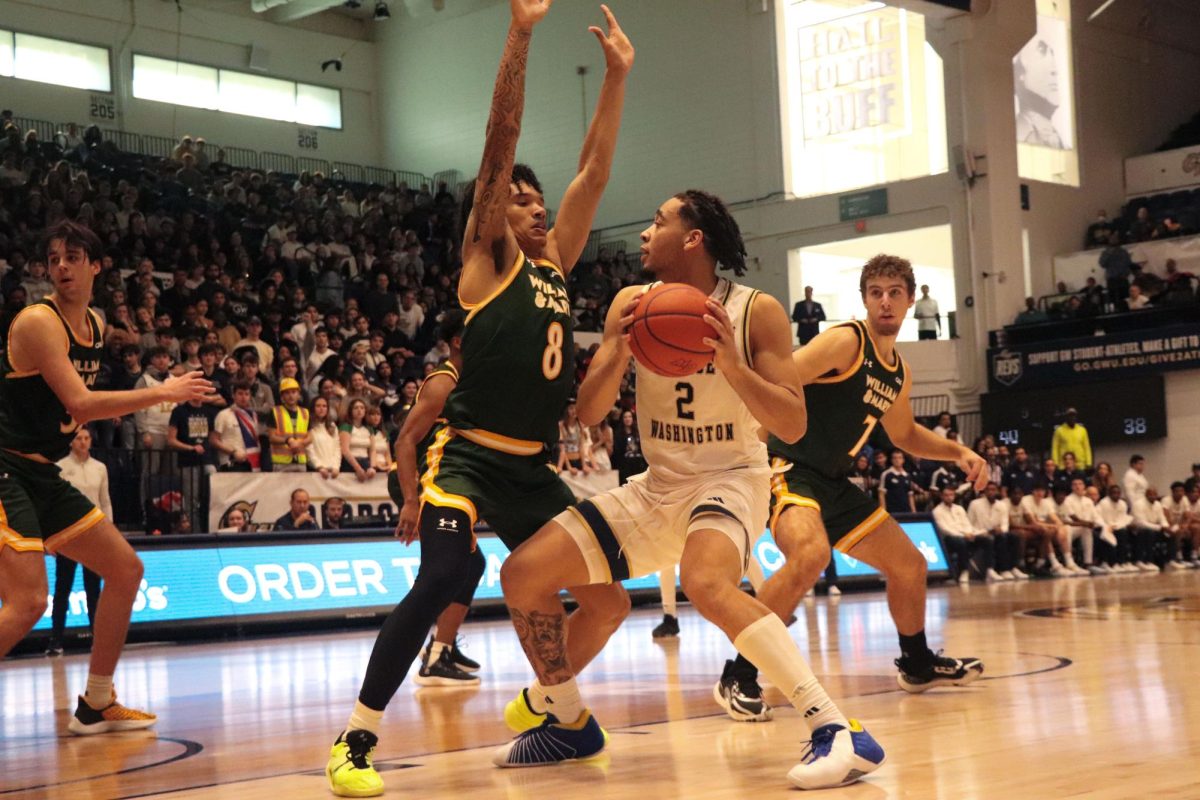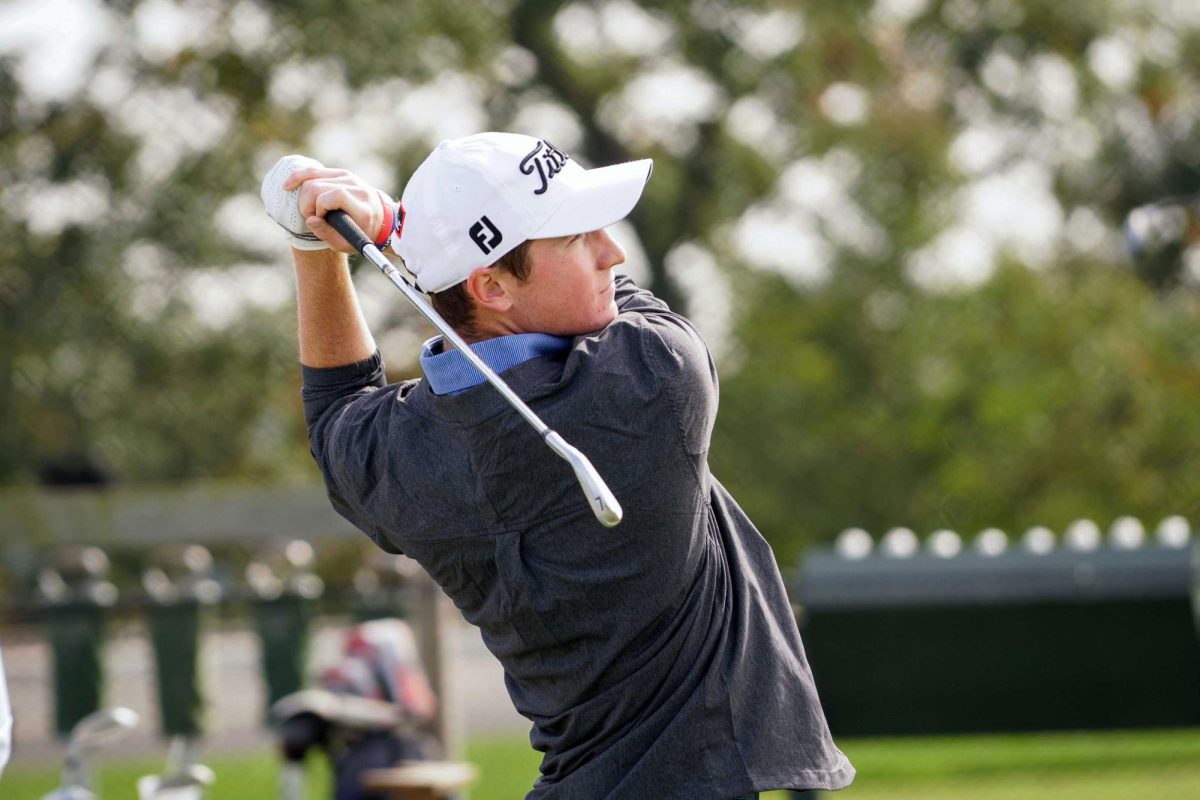From Betty Ford to Michelle Obama, first ladies have historically heel turned and hip twisted on the shiny floors of Congressional balls and the East Room. But GW’s First Ladies have traded in the ballroom floor for the waxy Smith Center hardwood, finding their spotlight as the Revolutionaries’ dance team.
On game days, the team arrives at the Smith Center two hours before tip-off, carefully working around basketball warmups to mark routines on the Smith Center court. At home games they are a constant, cheering on both the men’s and women’s basketball teams from the sidelines in addition to performing at halftime.
All 17 First Ladies have previous dance experience across a variety of genres, a foundation some dancers said helped them adjust to dancing at the collegiate level.
Junior Ana Arledge, who is entering her third year on the team, has been dancing since she was little. As she’s gotten older and more experienced, she said she has experimented with different styles like ballet, hip-hop, contemporary and more.
Arledge said First Ladies routines focus on jazz while occasionally incorporating hip-hop as well.
“First Ladies is primarily jazz,” Arledge said. “And then we have some hip-hop routines, but it’s primarily jazz.”
Sophomore Kate Amistoso, who also manages the team’s TikTok account, was a member of her high school’s pom team and was formally trained in dance while growing up in California.
“I have a studio background in being formally trained in jazz, hip-hop, tap, lyrical, contemporary and ballet,” Amistoso said. “But I was also fortunate enough to have a pom team at my high school as well, which I was a part of all four years. And I feel like that really helped me have the foundation to be on the First Ladies just because I was already aware and had been practicing what styles we perform with.”
This season, the team welcomes back much of last year’s roster. With only a few new rookies, senior and team co-captain Olivia Ferguson said that their performance should be stronger than in years past.
“As a whole, the team is very strong,” Ferguson said. “Simply because we have a majority of people who have already done this at least one or two years.”
In her role as co-captain — alongside junior Tess Mendelson — Ferguson said she acts as a support system for her team while also assisting Head Coach Maggie Klee with choreography.
In addition to the work of Klee and the captains, the team collaborates with outside alumni and dancers when crafting choreography. As the dancers gain more experience, they get the opportunity to choreograph half-time performances.
“It’s fun to kind of be on the team for a few years, you know, figure out what’s happening,” Ferguson said. “And then by the time you’re an upperclassman, you get the chance to choreograph and be more of a part of it, which is really fun.”
In addition to their rigorous practice routine, team members said the squad serves as a home base while fostering a sense of community, especially for younger dancers.
“I’m from California, and so traveling all the way to the other side of the country for school was a little bit daunting at first,” Amistoso said. “But to have a team on campus and like a little family for me to just get used to the community here, it’s helped me really transition from high school to college but then also just get to know GW better. So I feel like it really does bring us together.”
While the team has established a system of support amongst each other, some dancers said a lack of access to some student-athlete perks, like the ability to register early for housing and classes, can make schedule planning and time management challenging.
“I think I think the hardest thing for us is the class registration because we do have set practice times that we have every week for the whole year or until March,” Ferguson said. “So it’s hard that we can’t get priority for that when we have a set schedule just like other athletes do.”
Additionally, Amistoso said not being perceived as peers by fellow student-athletes can be frustrating, especially given the amount of energy the squad devotes to their craft.
“I also think among the student-athlete community in general, not everyone really sees us as athletes, which is a little disappointing because you put so much time and effort into something, you would like that to be recognized,” Amistoso said. “But I don’t think it’s been a major barrier. And we’re all here just because we like GW and we like what we do, so it keeps us going to just have each other.”
Despite such obstacles, Ferguson said the team has continued to grow, especially with the retention of more members than in previous years.
“Honestly, I think the team just gets better every year,” Ferguson said. “We have stronger and stronger dancers who want to come out.”





